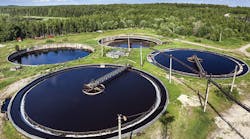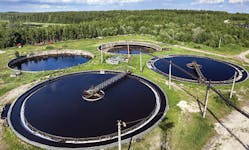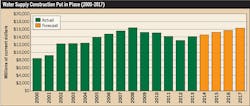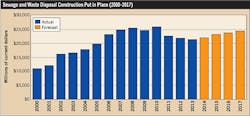Most forms of infrastructure spending are financially squeezed right now. State and municipal budgets continue to struggle, and bonds continue to be more difficult to sell. The ability to fund necessary water infrastructure improvements has been central to the 2013 construction decline of 3% in the sewage and waste disposal market, as many municipal water systems still depend on the tax base for funding.
It is probably a safe assumption that somehow politicians will find a way to address funding. Many of the water/wastewater systems around the country are on the brink of failure. In addition, Americans are not going to tolerate a lack of fresh water supply in their homes and workplaces. Water availability is also a concern for large-scale industrial and manufacturing processes. Therefore, upgrades and expansions to water and sewage infrastructure will follow.
SIDEBAR 1: Water Supply Trends
• Recent research from the EPA reports, “$72.5 billion is needed to prevent contamination of 73,400 water systems across the country, as well as water systems in American Indian, Alaska Native Village and other U.S. territories.” (Wengian Zhu, CNN Money, June 5,2013)
• Strength in the mining sector creates a tremendous amount of water infrastructure work throughout North America and abroad. Commodity market strength continues to drive increased levels of mining activity through the development of new mines and redevelopment of existing mining assets. Heightened mining activity leads to increased demand for related infrastructure, including water.
• Federal assistance for the safe drinking water State Revolving Fund (SRF) in the 11-yr period between 1997 and 2008 totaled $9.5 billion, just slightly more than the investment gap for each of those years.
• Green construction practices, such as controlling runoff to help increase groundwater, will become the norm for improvements and new construction.
• Water for shale oil and gas mining will increase demand in selected areas of the country.
SIDEBAR 2: Sewage/Wastewater Trends
• Growth, driven by aging infrastructure and regulation, is on the horizon, but the length of that horizon is still unknown. Slow wastewater infrastructure markets in the aftermath of the recession continue to build the backlog of necessary work as existing infrastructure ages.
• In need of replacement and upgrading, the 16,000 wastewater systems nationwide discharge more than 850 billion gal of untreated sewage into surface waters each year.
• Combined sewer systems (storm water and sewage) serve roughly 950 communities with about 40 million people. Most communities with CSOs are located in the Northeast and Great Lakes regions.
• The Clean Water State Revolving Fund (CWSRF) programs have provided more than $5 billion annually in recent years to fund water-quality protection projects.







